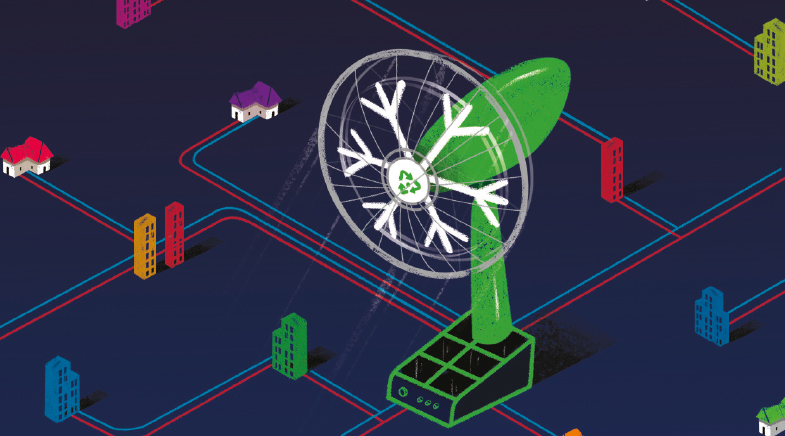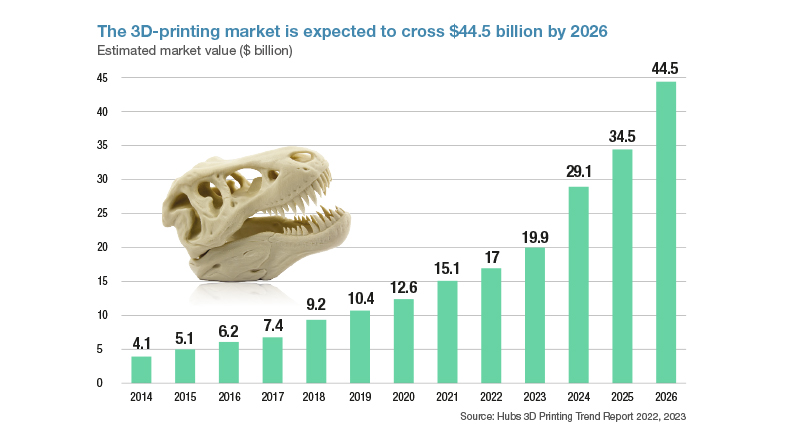Flashback, fast forward
-
- from Shaastra :: vol 04 issue 05 :: Jun 2025

Millennia-old monsoon variabilities may help explain future patterns.
Kaustubh Thirumalai is an adventurous man. He goes scuba-diving and spelunking and spends long weeks out in the sea. These are not his hobbies, though. For the 37-year-old Associate Professor of Geosciences at the University of Arizona, U.S., swimming in coral seas or exploring oxygen-starved caves is a part of work. He looks out for millennia-old records of the Earth, saved as calcium carbonate on a piece of stalactite, a chunk of coral, or on the shells of microscopic foraminifera, long dead and buried on the ocean floor. From these archives, he tries to recreate monsoons of the distant past.
Thirumalai's favourite tool for reconstructing the past is the stable oxygen isotope 18O, which he uses as a palaeo-thermometer. The method was first proposed by American Nobel Laureate Harold Urey, who noted that the percentage of this isotope in a sample could tell the prevailing temperature when it was formed. The lower the temperature, the greater the percentage of 18O. Thirumalai analyses the sample, dates it, and calculates the 18O amount to deduce the temperature of the age when it was formed. It is the first step in the recreation of a palaeo-climate. "Reconstructing rain is difficult since there are only a few records of fossilised water or air [bubbles] in ice cores," he says. "Reconstructing past temperature is easier through proxies like shells and speleothems."
A recent study on monsoon behaviour over the Bay of Bengal in the past 21,000 years concluded that ancient monsoons were much more extreme.
A recent international study (go.nature.com/3T2m8uo), of which he was the lead author, examined monsoon behaviour over the Bay of Bengal in the past 21,000 years. The group reconstructed the volume of freshwater — monsoon runoff — on the bay over the period and concluded that ancient monsoons were much more extreme than current ones. "The strongest monsoons were 20-30% stronger, and the weakest were 30-40% weaker than the prevailing pattern," Thirumalai says. The bigger takeaway was the impact of these extremes on marine life. At both ends, marine productivity — calculated from plankton production — suffered. When too much freshwater collects on the surface, it prevents nutrients from mixing, thus starving plankton. Weak monsoons reduce the wind-driven mixing of nutrients on the surface, with the same result.
The study projects that changes driven by global warming — a warmer sea surface, weak surface winds, and more freshwater pouring into the bay from rain-fed rivers, for instance — could cause a repeat of such phenomena over the next 100 years. This bay produces 8% of global fishery output and supports vast populations along its rim. A collapse in its production, therefore, could have economic repercussions, Thirumalai says.
MONSOON AND HISTORY
The Indian Summer Monsoon is a wind and rain system that has had a significant impact on the Indian subcontinent in sustaining its varied biota, and even influencing human migrations. The monsoon also determines the course of history, says A.P. Dimri, Director, Indian Institute of Geomagnetism, Mumbai. He participated in a study of the Indian monsoon spanning 2,200 years. Lake sediments in Gujarat demonstrated that most invasions into India up to the medieval times were during periods of strong monsoons that had increased agrarian productivity in India, but when Central Asia was "hyper-arid and uninhabitable" (bit.ly/monsoon-invasions).
This monsoon system began forming around 27 million years ago after the Himalayan range rose, blocking the northward journey of moisture-laden winds. "Its behaviour in the past holds the key to its variability in future scenarios," says Rajagopalan Balaji, hydrologist and Professor at the University of Colorado Boulder's Department of Civil, Environmental and Architectural Engineering. With anthropogenic forces significantly impacting climate, researchers are studying ancient monsoons in eras when the Earth was much warmer, to model future scenarios.

Sijinkumar A.V., for instance, collects foraminifera exoskeletons by drilling cores from the sea bed. "The ocean floor is like a storybook; every layer is a page in time," says Sijinkumar, an Associate Professor in the Department of Geology of the Central University of Kerala, Kasaragod. Foraminifera live on the surface or in the water column for a month or so. They have silica or calcareous shells, which fall to the bottom after death. With their short lifespan, they capture a precise moment in time, a month or a season, giving scientists data with very fine temporal resolution. The abundance of certain species, such as Globigerina bulloides, indicates a strong monsoon. Some species, such as Neoglo-boquadrina dutertrei, prefer low salinity, and their abundance, too, indicates a stronger monsoon. In a recent publication, Sijinkumar's team reconstructed the monsoon variability in the past 15,000 years primarily by analysing foraminifera fossils in the Bay of Bengal (bit.ly/monsoon-variability).
Their research showed the monsoon was more intense in the early to mid-Holocene period (11,000-5,000 years ago) when the Earth was warm, and less intense from 4,200 years ago, when it began to cool down. This warm period was caused by changes in the Earth's axial tilt. The study notes that global warming could create similar temperature scenarios. "The Bay of Bengal records show a cyclicality of monsoon every 10,000 years, going from strong to weak. We are in the middle of the cycle now, but anthropogenic forcing could complicate the system in the future," he says. According to Sijinkumar, palaeo-data show that the variability of the monsoon was much higher in the last thousand years, and even more so in the past two centuries. Whether this variability was driven by humans is not yet known.
Increased land mass heating is changing the wind pattern. Such variability will lead to changes in agricultural outputs, droughts, and flooding.
"There is already a small shift in the monsoon over the past few decades, with less rain in the Northeast and more episodes of heavy precipitation over Rajasthan and Pakistan," says Dimri, whose group works on dynamic climate modelling for past and future scenarios. "By 2050, the westward shift will be even more apparent," says Dimri, explaining that increased heating of the land mass is causing a change in the wind pattern. Such variability will lead to changes in agricultural outputs, droughts, and flooding (bit.ly/monsoon-shift).
WARMING/COOLING CYCLES
Archival records can go back millions of years, but most of the research into palaeo-monsoon is focused on the Quaternary Period, which began 2.58 million years ago. Even more work is centred on the Holocene, which saw the emergence of civilisation. The Indian monsoon has experienced variability over centennial, millennial, and orbital time scales. "The Earth has gone through cycles of extreme warming and cooling. Its orbit changes over time, from circular to elliptical, and so does the wobble on its axis, causing changes in solar radiation intensity. All these impact the variability of the monsoon," says Arun Deo Singh, Head of the Geology Department at Banaras Hindu University. Singh began his research in palaeo-oceanography in 1984 from the equatorial Indian Ocean. He subsequently worked on the Arabian Sea and the Bay of Bengal, too. Over the years, he says he has seen a sea change in the global understanding of factors influencing the monsoon. "Up to a decade ago, most believed that the climatic changes in the high latitudes of the northern hemisphere impacted the monsoon on orbital to millennial time scales. Now, more data from the Bay of Bengal and the Arabian Sea indicate that the southern hemisphere has a major role in driving the variability of the monsoon over decadal time scales," he explains.
While numerous forces influence the variability of the Indian monsoon, anthropogenic forcing will likely be the strongest driver over the next hundred years. "We are heading towards carbon dioxide levels that no humans have seen before, but such an environment existed perhaps three million years ago," says Thirumalai.
Just how strong will this forcing prove to be in the long run? Time, and the foraminifera, will tell.
See also:
Monsoon musings
Let's take a monsoon rain check
Come rain or shine
It's raining solutions
Have a
story idea?
Tell us.
Do you have a recent research paper or an idea for a science/technology-themed article that you'd like to tell us about?
GET IN TOUCH














